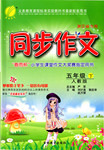题目内容
— I’m sorry to tell you that you made a mistake in your test.
— How can that be? I did it _______ in class.
A.as toldB.as am told
C.as tellingD.as I told
练习册系列答案
 春雨教育同步作文系列答案
春雨教育同步作文系列答案
相关题目
题目内容
— I’m sorry to tell you that you made a mistake in your test.
— How can that be? I did it _______ in class.
A.as toldB.as am told
C.as tellingD.as I told
 春雨教育同步作文系列答案
春雨教育同步作文系列答案